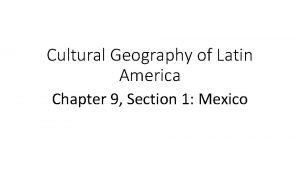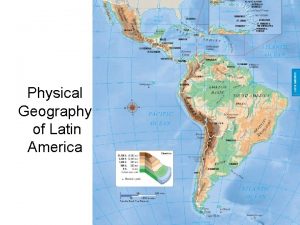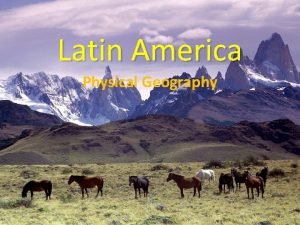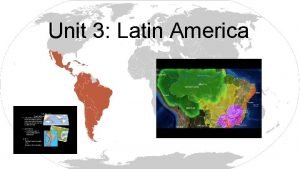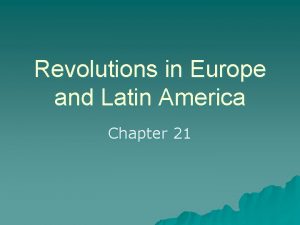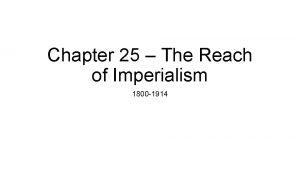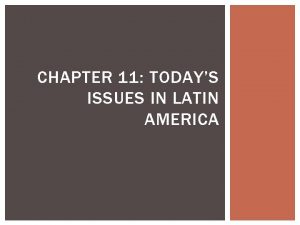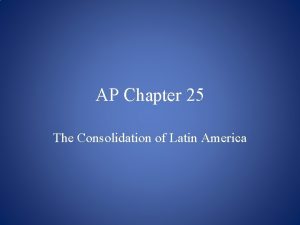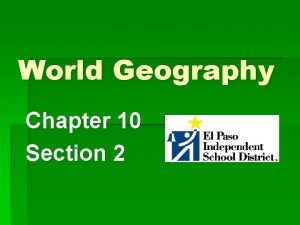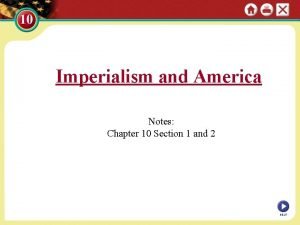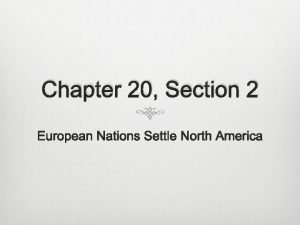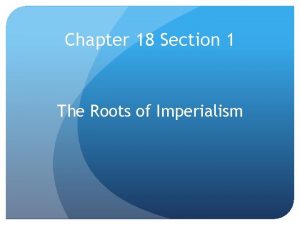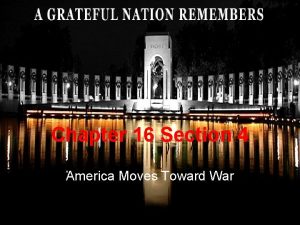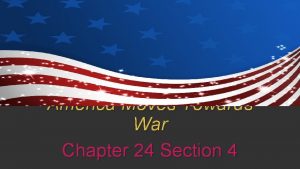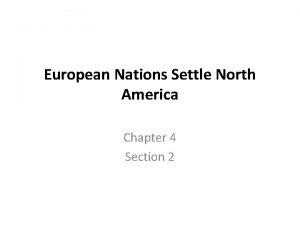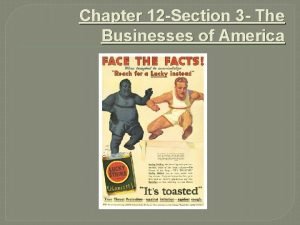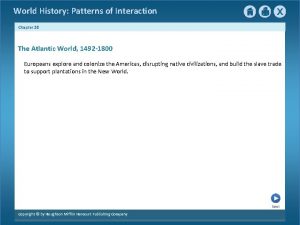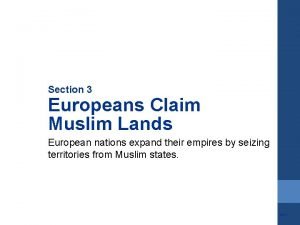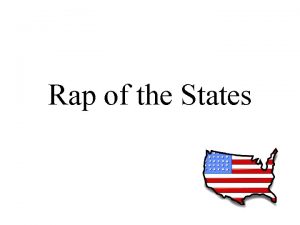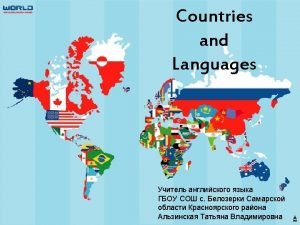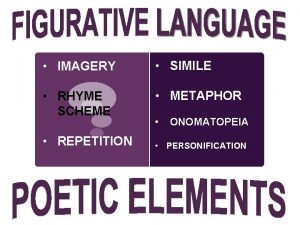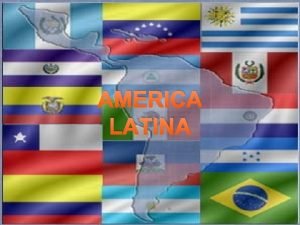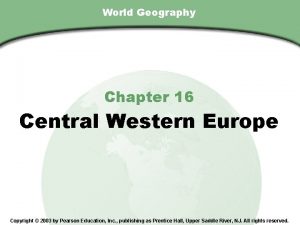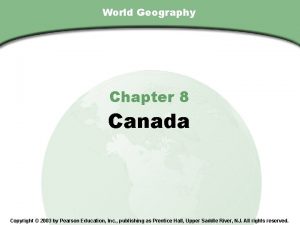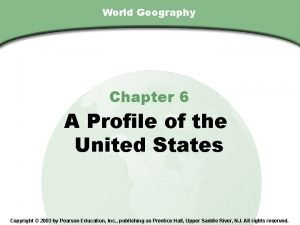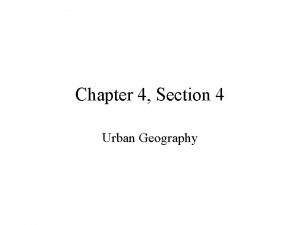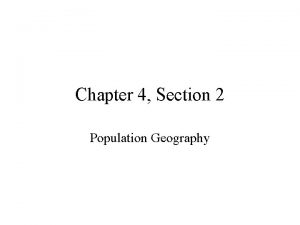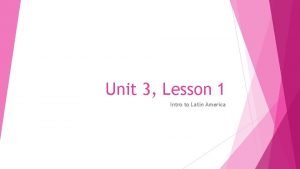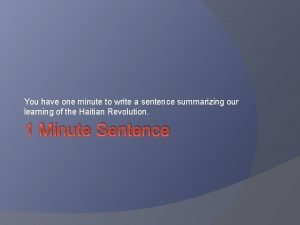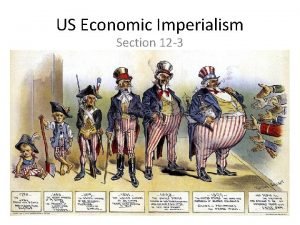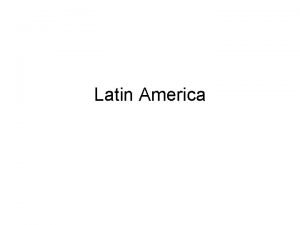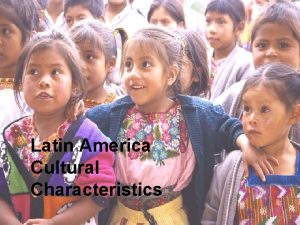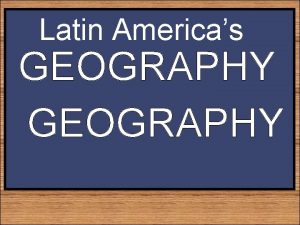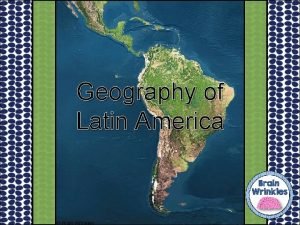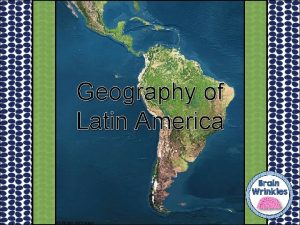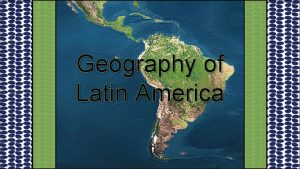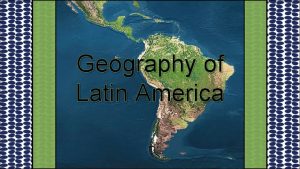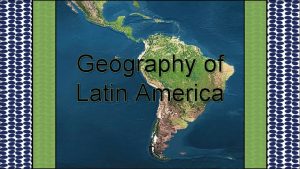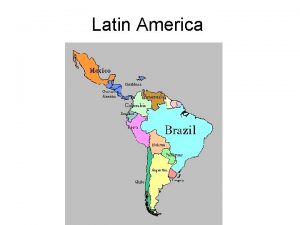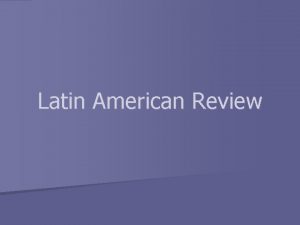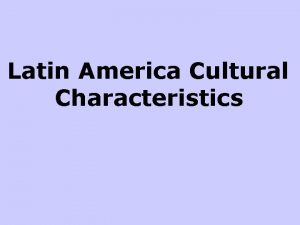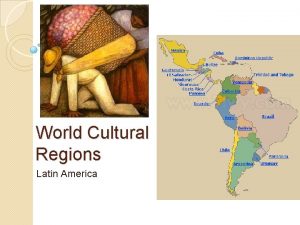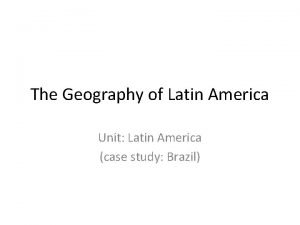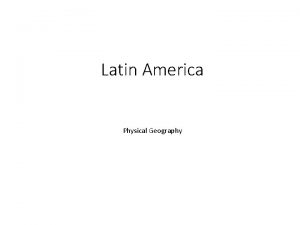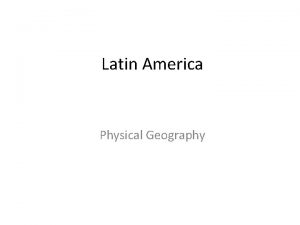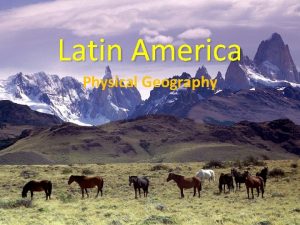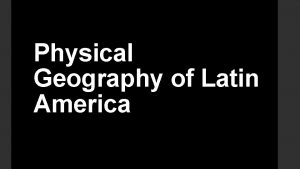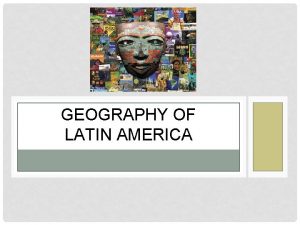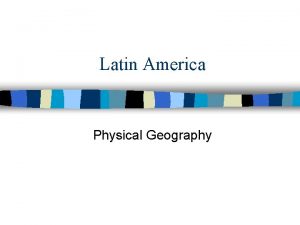Cultural Geography of Latin America Chapter 9 Section










































- Slides: 42

Cultural Geography of Latin America Chapter 9, Section 1: Mexico

Map of Mexico

The Tri-Color The First Flag of the Mexican Republic (1867 -1893) Current Flag (1968 -Present)

Important Vocabulary • Indigenous: people descended from an area’s first inhabitants. • Mestizo: people of Native American and European descent. • Urbanization: movement of people from rural areas to cities. • Megacity: a city with a population over 10 million. • Prime City: an urban area that dominates a country’s economic, political, and cultural affairs. • Glyph: picture writings carved in stone. • Chinampas: floating “islands” made from large rafts.

Vocabulary (Cont’d) • Conquistador: a (Spanish) conqueror. • Viceroy: a royally appointed official. • Caudillo: a dictator. • Syncretism: the blending of beliefs and practices. • Malnutrition: lack of proper food. • Mural: wall paintings. • Mosaic: pictures made with colored stone or tile. • Extended Family: a large family.

The Mexican Population • As of 2012, 109. 6 million people in Mexico. • First peoples likely came 40, 000 to 60, 000 years ago from Asia. • Mayan Civilization and Aztec Empire. • The population density is 146 people per square mile. • External migration.

Mayan & Aztec Empire • Mayan Civilization: 250 – 900 AD. • Agricultural and trade economy. • Aztec Empire: 1300 s – 1519. • Heavy agriculture.

Spanish Conquest • Hernan Cortes conquered the Aztecs in 1521. • Mexico was part of the Spanish Empire for 300 years. • In the late-1700 s, hostility towards Spanish rule.

Mexican Independence • Mexico was first Latin American country to gain independence. • Father Miguel Hidalgo led independence movement. • Power in the new Mexican Republic doesn’t change.

An Independent Nation • Public unrest, power struggles, and revolts. th • Late 19 century Mexico under dictatorships.

The th 20 Century • Mexico is a federal republic: executive, legislative, and judicial branches. • From 1929 to 2000: oneparty rule under PRI. • The PAN under Vicente Fox ends one-party rule.

Mexican Culture • Spanish is the official language. • Roughly 90% are Roman Catholic. • Lack of quality education. • Gov’t-run healthcare. • Revival in indigenous arts and music. • Mexicans value the family. • Bullfighting, soccer, and baseball.

Cultural Geography of Latin America Chapter 9, Section 2: Central America and the Caribbean

Map of Central American and the Caribbean

Important Vocabulary • Dialect: a form of a language unique to a particular place or group. • Patois: dialects that blend indigenous, European, African, and Asian languages. • Matriarchal: the family being ruled by the woman.

The Population • Great diversity of indigenous people and European settlers. • The first inhabitants were indigenous people. • At least 2/3 of Central Americans are mestizos. • Africans first arrived as slaves. • Caribbean nations are densely populated. • Mass emigration from Central America and the Caribbean. • Roughly 66% live in urban areas.

European Conquests • The Columbian Exchange led to Spanish colonization and global trade. • First European settlement was in Hispaniola in 1493. • Africans came as slaves.

Independence • Francois Toussaint. Louverture led a slave revolt in Haiti. • Central America gained its independence in the 1800 s. • Caribbean nations were the last to gain independence.

th 20 Century Changes • The Panama Canal brought new economic growth. • Cuban revolution under Fidel Castro in 1959. • The 1990 s witnessed democratic reforms. • Continued struggles.

Culture • Many languages and dialects spoken. • Catholic and Protestant nations. • Education varies greatly. • Healthcare based on living standards.

Culture (Cont’d) • Native American artworks. • Music and dances combine native and European styles. • Family is society’s basic unit. • Baseball, basketball, and volleyball.

Cultural Geography of Latin America Chapter 9, Section 3: South America

Map of South America

Important Vocabulary • Brain Drain: loss of highly educated citizens and skilled workers to other countries. • Quipu: a series of knotted cords of various colors and lengths. Inca recordkeeping.

The Population • World’s 4 th largest continent – 386 million people. • The indigenous groups live in the Andes region. • The Spanish and Portuguese were the first Europeans. • Millions of European immigrants. • High rate of population growth. • Low population densities. • Mass emigration for better living conditions. • Roughly 80% live in urban areas.

Early Cultures • Moche, Mapuche, and Aymara: agricultural societies (1 st century AD). • Inca Empire (1200 s-1572): highly-developed civilization. • Inca wealth attracted Spanish conquistadors.

European Conquests • Francisco Pizarro destroyed the Inca Empire. Spanish expansion. • The Portuguese settled in Brazil. • The English, French, and Dutch settled in the north. • Viceroyalties were established. • Africans came as slave labor.

Independence • Revolution leaders: Simon Bolivar in Venezuela and Jose de San Martin in Argentina. • Only Brazil peacefully gained its independence. • French Guiana is still part of France.

Struggles • Elites maintained power; caudillos. • Some countries underwent democratic reform. • Political corruption continues. • People desire economic liberties and basic rights.

Culture • Many languages spoken. • The majority are Roman Catholic. • Education varies. • Healthcare varies on economics. • Traditional arts and crafts continue. • Music and dance: Argentine tango and Brazilian samba. • Strong family households. • Soccer, basketball, auto racing, tennis, and boxing.

Latin America Today Chapter 10, Section 1: The Economy

Important Vocabulary • Export: selling goods to other countries. • Campesino: rural farmers and workers. • Latifundia: large agricultural estates owned by wealthy landowners or corporations. • Minifundia: small plots of farming land. • Cash Crop: crops produced in large amounts for selling and trading.

Vocabulary (Cont’d) • Developing Country: working towards greater manufacturing and technology use. • Gross Domestic Product (GDP): the value of goods and services a country produced in a year. • Service Industry: those that provide a service. • Maquiladora: a factory. • Free Trade Zone: areas of a country in which there are no trade restrictions.

Agriculture • Agriculture is main supply of income. Most is exported. • Uneven land distribution; inequality. • Farming is mechanized. • Physical geography: great cash crops. • Cattle-raising for export.

Industry • Efforts for more manufacturing and industry. • Rising service and telecom industries. • Tourism has been essential. • Foreign investments.

Transportation • Many issues with road and railroad construction. • Pan-American, Trans-Andean, and Trans-Amazonian Highway. • Well-developed railway systems. • Waterways and air travel are very important.

Communication & Trade • Variety of communications. • Gov’t censorship during political unrest. • Growing use of technology. • NAFTA (1994) and DR-CAFTA (2005). • Many Latin American nations have foreign debt.

Latin America Today Chapter 10, Section 2: People and Environment

Important Vocabulary • Deforestation: the clearing of forests. • Sustainable Development: technological and economic growth without depleting human and natural resources. • Slash-and-burn Farming: using ash from burnt plants and trees to soil the ground. • Reforestation: planting of young trees or tree seeds. • Shantytown: slums or makeshift communities.

Managing Resources • Reduced forests in the Amazon Basin. • Almost 20% of Amazon rainforest has been destroyed. • Serious threats to ecosystem. • Laws mandating reforestation and conservation.

Human Impacts • Rapid urbanization has strained natural resources. • The rise of shantytowns/slums. • Increase of smog and smokestack pollution.

Future Challenges • There have been territorial conflicts over past 150 years. • The region is vulnerable to natural disasters. • Gov’ts are working together for better forecasting.
 Chapter 9 cultural geography of latin america answers
Chapter 9 cultural geography of latin america answers Why is called latin america
Why is called latin america Chapter 8: the physical geography of latin america answers
Chapter 8: the physical geography of latin america answers Physical geography of latin america worksheet answers
Physical geography of latin america worksheet answers Geography of latin america color by number
Geography of latin america color by number Andes mountains map
Andes mountains map Latin america's geography cloze notes 1
Latin america's geography cloze notes 1 Latin america physical geography
Latin america physical geography Revolutions in europe and latin america section 2 quiz
Revolutions in europe and latin america section 2 quiz Chapter 25 lesson 4 imperialism in latin america
Chapter 25 lesson 4 imperialism in latin america Chapter 11 today's issues in latin america
Chapter 11 today's issues in latin america Chapter 25 the consolidation of latin america
Chapter 25 the consolidation of latin america The cultural geography of europe chapter 12 answer key
The cultural geography of europe chapter 12 answer key Chapter 15 cultural geography of russia answer key
Chapter 15 cultural geography of russia answer key Chapter 10 section 2 central america and the caribbean
Chapter 10 section 2 central america and the caribbean Chapter 10 section 1 imperialism and america
Chapter 10 section 1 imperialism and america Chapter 20 section 2 european nations settle north america
Chapter 20 section 2 european nations settle north america Postwar america chapter 19 section 1
Postwar america chapter 19 section 1 Chapter 18 section 1 imperialism and america
Chapter 18 section 1 imperialism and america Chapter 16 section 4 america moves toward war
Chapter 16 section 4 america moves toward war Chapter 24 section 4 america moves toward war
Chapter 24 section 4 america moves toward war Chapter 4 section 2 european nations settle north america
Chapter 4 section 2 european nations settle north america The business of america chapter 12 section 3
The business of america chapter 12 section 3 Chapter 20 section 2 european nations settle north america
Chapter 20 section 2 european nations settle north america Chapter 20 section 2 european nations settle north america
Chapter 20 section 2 european nations settle north america European nations settle north america
European nations settle north america Chapter 10 section 1 imperialism and america
Chapter 10 section 1 imperialism and america Rap of the states
Rap of the states Asia africa europe north america south america
Asia africa europe north america south america Repetition in let america be america again
Repetition in let america be america again Performance e body art
Performance e body art Imagenes de la diversidad cultural de america
Imagenes de la diversidad cultural de america World geography chapter 16 section 1
World geography chapter 16 section 1 World geography chapter 8 section 1
World geography chapter 8 section 1 World geography chapter 6 section 1
World geography chapter 6 section 1 Exurb ap human geography definition
Exurb ap human geography definition Chapter 4 section 2 population geography
Chapter 4 section 2 population geography Chapter 8 section 1 latin american peoples win independence
Chapter 8 section 1 latin american peoples win independence South america facts geography
South america facts geography Latin america webquest worksheet answers
Latin america webquest worksheet answers Lesson 1 physical geography of south america
Lesson 1 physical geography of south america One minute sentence
One minute sentence Imperialism in latin america
Imperialism in latin america
